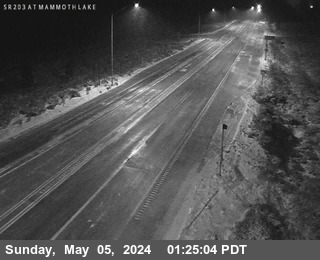Brought to you by Howard Sheckter
Mid Winter Dry Spell Will Gradually Come to an End This Week Bringing Relief to Those Living Below The Inversion…..MJO on the Move……>>
Sunday January 20, 2013
Sunday Evening Update:
Took a look at the Sunday 12Z ECMWF QPF for next Sunday night through Monday night over the Mammoth Crest. It dumps between 3 to 4 inches of water eq compared to the 18z GFS which dumps about 1/2 an inch the same time. Lets see…that the difference is about 5 inches of snow compared to about 3 feet. Lots of time to work this one out….Update in the AM:
___________________________________________________________________________________________________________
Relief is finally in sight this week to those that live under the inversion trapped in the cold air. Mono City and Lee Vining residents living near the influence of the large body of water and open heat/moisture source has been effected more often than not the past month. The radiational cooling effects of the atmosphere and subfreezing air-mass trapped below sinking air, in combination with the thermal heat source from the lake radiating into it has kept Ice fog conditions at times, day and night. Bridgeport whos high temps has ranged from the teens and 20s and lows from 0F to -29F will begin to recover by mid week, as temperature inversions begin to break. As this as a system to the north of Ca will weaken the 500mb upper level ridge over the far west Wednesday.
Comment: It looks like the lower elevation valleys have through Tuesday to deal with the fog and cold. By Wednesday morning, a system to the north should be strong enough to mix you out.
Here in the High country at the 8000 foot level, temperatures have been slightly above normal! Highs have been in the 40s the past week with lows from 8F at the Mammoth Ranger Station to the upper teens and 20s at the Village at Mammoth in the Banana belt. Breezy weather will begin to develop over the Sierra crest out of the WSW later Tuesday night then into Wednesday. The upper level winds will eventually become North Westerly. We will ridge up again Later Thursday into Friday temporally.
High temperatures will remain in the 40s in Mammoth at 8000 ft through Tuesday with lows 10 to 20.
The Weekend:
Increasing clouds and winds with snow developing Saturday night into the following week. (1st week of February)
See: the Cut Off Low forming to our SSW. The Dweebs will have to keep an eye out for this Subtropical moisture source by weeks end
http://www.ssd.noaa.gov/goes/west/nepac/flash-ir2.html
Interseasonal:
Some Information about the AR:
“The Pineapple Connection is a popular term for a wide range of Atmospheric River connections with high Moisture Transport flows into California measured by Kilograms per microseconds within the actual flow. The historic range seems to be between 500 KG/m/s and 3500KG/m/s historically. The most intense single AR event occurring between 1948 and 1999 occurred with the event crossing at 35N in February of 1986. That was the Atmos-River that caused the famous avalanche slide that took the pines down Sherwin Bowl on the 19th of February. Over 10 inches of rain fell on top of a rich snow pack over night. It flooded the Truckie River to the north and made it impassable for roads crossing perpendicular between Nevada and Ca.”
See Also: http://www.esrl.noaa.gov/psd/atmrivers/
http://65.74.139.74/2005publications/CEC-500-2005-004/CEC-500-2005-004.PDF
The MJO that has been slowly moving east the past month that initially intensified the first week of Janaury has been Canonical in its impacts in the subtropics and the down stream effects upon the mid latitudes. Read the following discussion from the CPC which relates to the weather across the CONUS for the upcoming week and beyond:
From the CPC:
Week-2, confidence is fairly high that the MJO will continue through phase 7, possibly into phase 8. Therefore, the outlook is based largely on phase-7 and phase-8 MJO composites, adjusted slightly using model guidance. Enhanced odds for above-average convection is indicated across the far eastern Maritime Continent, centered near Papua New Guinea extending eastward well past the Date Line, generally along and south of the Equator. Drier-than-average conditions are favored over much of the equatorial Indian Ocean and western Maritime Continent. The forecast MJO phase and model guidance are generally supportive of an enhanced risk of tropical cyclone formation in South Pacific. The forecast precipitation dipole over South America is continued from Week-1 with
high confidence due to an even more favorable MJO phase location and good model agreement.
The current MJO event serves as the best case this season in terms of the “canonical impacts on the extratropics”. The expected wave pattern resulting from convection centered over the Indian Ocean was realized as ridging developed in the both the North Pacific and eastern North America. As the MJO shifts into the Pacific, it will play a role in extending the East Asian jet eastward. Geostrophically we expect lower heights over the North Pacific and then the canonical downstream wave pattern with lower-than-normal heights over the eastern CONUS. This is bourne out by the latest CFS guidance for weeks three and four. The resulting hydroclimate impacts are an enhanced probability of colder-than-average temperatures over the eastern part of the CONUS and drier-than-average conditions over a large part of the CONUS, except for the eastern seaboard. If the MJO propagates through phases 8 and 1, this can support a renewed southern storm track in early February. Superimposed on the tropical variability is another forcing external to the troposphere, namely, a sudden stratospheric warming, which is ongoing whose impacts could potentially amplify those forced by the MJO over the next few weeks.




